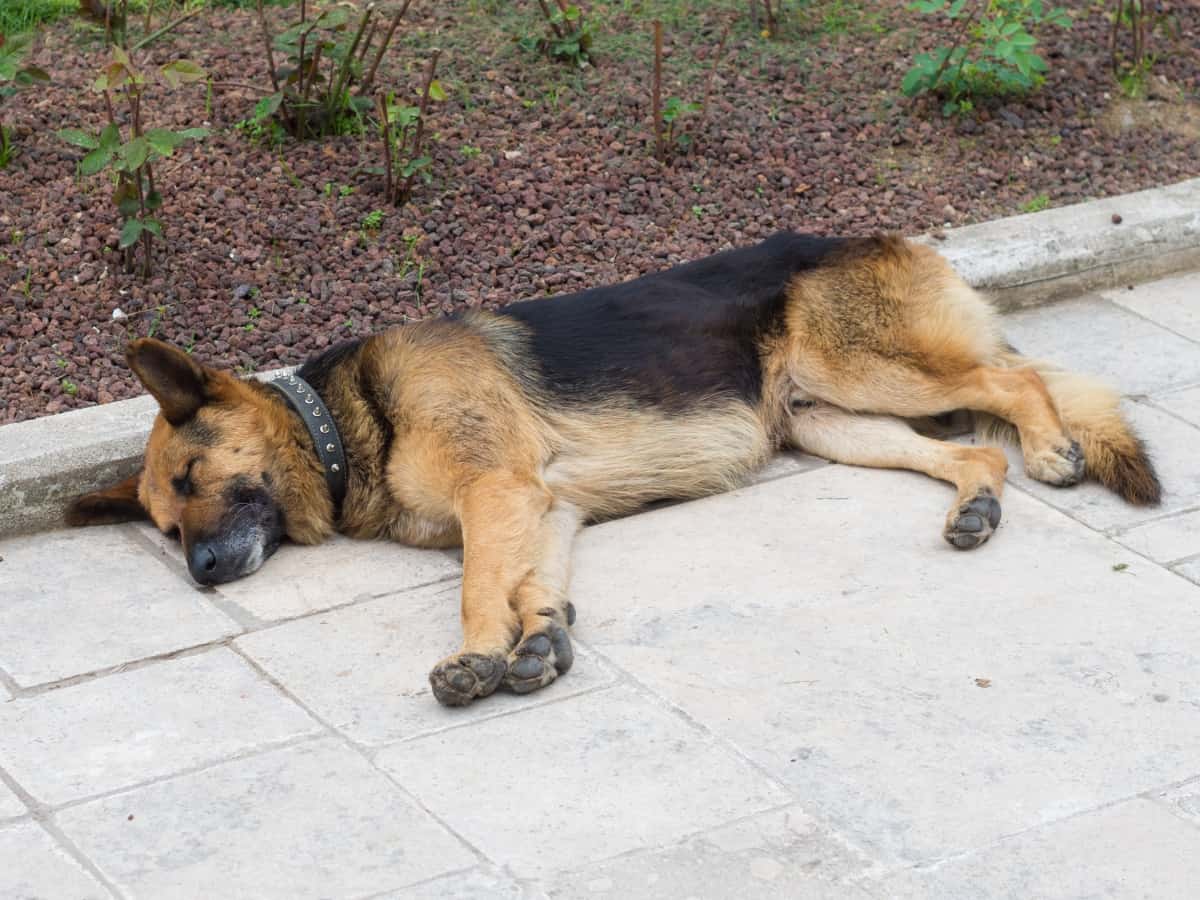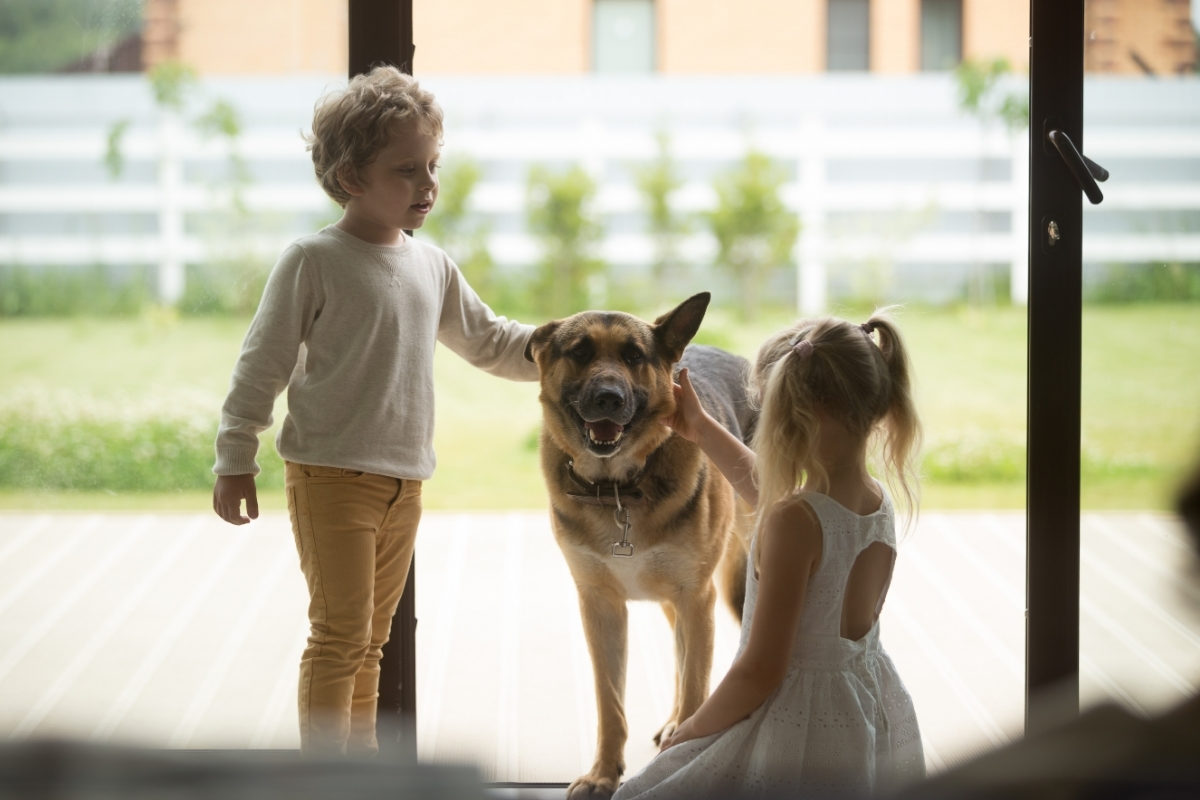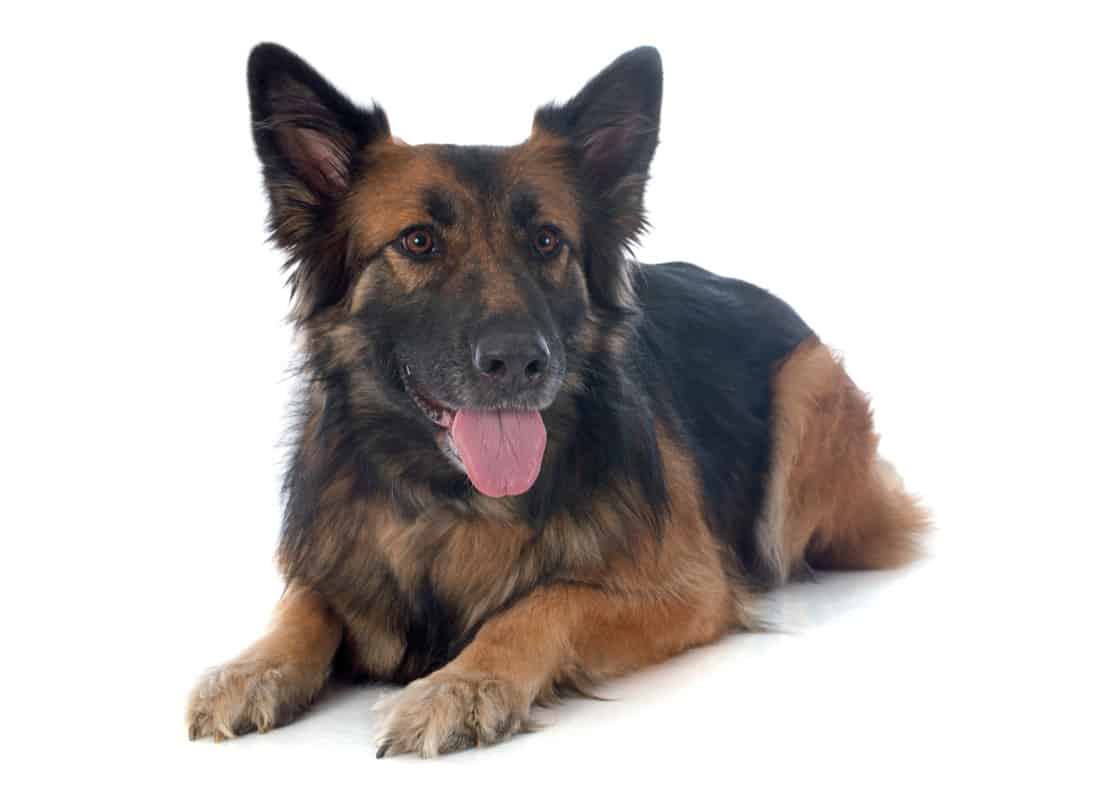When dog lovers think of showing a German Shepherd affection, they imagine petting them and rubbing behind their ears to get their tails wagging. Most dogs love it; however, some breeds do not enjoy human affection as much as others do. So, do German Shepherds like to be petted?
German Shepherds tend to be quite affectionate with their human companions and will tolerate being petted. However, each dog has a different personality and will react differently to physical affection, so it is not uncommon for a German Shepherd to dislike being petted.
Because even dogs of the same breed can vary in how well they agree with being petted, it can be challenging to know what your dog prefers.
Continue reading to understand if your German Shepherd likes to be petted, how to pet a German Shepherd, and what to do if your dog doesn’t like to be shown affection.

How To Know If Your German Shepherd Likes To Be Petted
When it comes to petting a German Shepherd, you should always look for cues from your dog to see if he wants to be petted.
If a dog is looking for a good rub down, he will:
- Approach you
- Sniff you
- Relax his body, such as his ears and other areas
- Soften or squint his eyes
- Lower and wag his tail
- Rub against you or lean on you
Any combination of these signs can mean your dog is looking for you to pet him. If you begin a petting session, make sure you read his cues while you are petting him to know when he wants you to stop and what areas of his body to avoid.
Petting can be a great bonding time for a dog and its owner. Always ensure your dog is enjoying the experience so it remains a positive and relaxing activity for him.
Another thing to be aware of when petting your dog is signs of involuntary reflexes. This is known as the scratch reflex, which keeps your dog safe from pesky fleas and other irritants.
More often than not, a dog does not enjoy being petted in an area of the body that causes an involuntary reflex, such as a frantically twitching or kicking foot. This area is usually found on a part of the dog’s belly.
The scratching in that area can agitate a nerve in his body, which may end up irritating your dog. If you find this spot on your dog, pay careful attention to how he reacts to being rubbed there and get to know your German Shepherd’s body language.
My German Shepherd is usually one big soft girl. However, if she is not in the mood for a kiss and a cuddle, she certainly lets me know with either a deep sigh or a groan! You must learn to understand when your dog likes to be petted and when not to continue.

How To Pet a German Shepherd
It’s important to remember that all German Shepherds are different (as are most dog breeds), but dogs generally like to be petted on the shoulders, chest, and base of the neck.
These are the usual areas to avoid:
- Top of the head
- Tail
- Muzzle
- Ears
- Legs and paws
- Between the toes
Most dogs dislike being touched on the top of the head and they will lower the head or duck away if they see a human hand reaching over to pat them.
When petting your dog always pet from the side rather than reaching over the top of your dog’s head. It’s best to make slow movements similar to a gentle massage or light scratching and always move your hand or fingers in the same direction of the fur.
Avoid patting the dog as they don’t like this. Petting your German Shepherd should be calm and gentle and enjoyable for you both.
How Do German Shepherds Show Affection?
Just because your German Shepherd doesn’t like to be petted doesn’t mean he won’t show you affection. Dogs will show affection in all sorts of ways.
German Shepherds are known for showing affection through various methods, such as tail wagging, rolling over on their belly, leaning into you, licking you, nudging you, following you around, or bringing you toys.
Common signs of affection your German Shepherd can show include the following:
- Wagging tails
- Direct eye contact
- Licking you
- Jumping around you
- Nudging or leaning on you
- Following you around
- Bringing toys or dropping them by you
- Rolling over
- Sleeping by you
- Excited when they greet you
- Smiling
- Mouthing
- Chewing
- Peeing by you
- Playing with you
- Checking on you

How Much Is Too Much While Petting Your German Shepherd?
As a pet parent of a German Shepherd, it’s essential to know when to pet and when to stop. Sometimes, your pet can get annoyed as you pet due to mood shifts or other immediate needs.
German Shepherds need regular petting (but not continuous), about two hours of exercise each day, and regular communication (with an option for him/her to express in lieu). When you fail to recognize his/her need, frustration settles in and affects your relationship with the dog.
Here’s what I do to ensure that my German Shepherd enjoys my petting and doesn’t feel it to be too much:
- Each time I pet my Willow, I wait for the response. A happy dog might want more and respond instantly.
- I don’t disturb my dog during mealtime. This lets my dog feel that the privacy isn’t intruded upon.
- I give ample time for my dog to reach out to me whenever he needs my attention. As a result, my dog knows that I’m there and easily accessible. It improves the relationship.
How To Train Your German Shepherd to Tolerate Being Petted
If you discover your German Shepherd prefers not to be petted, this can be difficult in social situations where you have friends or family who would like to greet and pet your dog.
German Shepherds are smart dogs, so you can and should be able to train your German Shepherd to accept and tolerate a quick petting.
If you want to train your German Shepherd to tolerate petting and accept it, there are a few training techniques you can use. The last thing you want to do is suddenly start petting your dog frequently with the hopes that he will get used to it. This will not work.
Overpetting your dog can lead to negative feelings towards the activity. Your dog can begin to panic and feel violated if you try to pet him too frequently.
Too much petting can also cause your German Shepherd to become too clingy. They are naturally very sensitive and emotional dogs and owners can often be at fault by inadvertently making them too attached if they are constantly petting, kissing, and cuddling them.
This can also lead to the dog suffering from separation anxiety when they are left alone. If this is the case with your dog, check out my article, German Shepherd Separation Anxiety: Training, Help & Treatment, for tons of info.
Dogs avoid being petted for various reasons; some include:
- Trust issues
- Previous abuse from another owner
- Depression
- Feelings of insecurity
- Feels threatened
When training your dog to be petted, begin by looking for cues from your dog on what he is comfortable with and what he is not. For example, if he will let you scratch behind his ears but turns away if you go for the top of his head, then don’t touch his head.
Some dogs are uncomfortable with being touched in certain areas. If this is the case with your dog, avoid that area as much as possible when you begin training.
For training to be successful, you need to pay close attention to your German Shepherd and what he is telling you. If your dog can learn to trust that you won’t continue petting him more than he wants or in places he doesn’t want to be petted, then he’ll naturally begin to accept pettings more often.
Here is how you can practice this idea with your dog:
- Call your dog over with a cue or command, such as a pat on your leg, a snap of the fingers, etc.
- Once the dog approaches, pet him softly in various areas and look for how he responds.
- Look for his cues and pause your petting session frequently, every 3 to 5 seconds, to see how he reacts.
- If he stays close and seems happy, continue petting him and verbally praise him. If he moves away or looks unhappy, stop petting him. Keep looking for signs from him until your dog no longer wants to be petted and end the petting session at that point. Here are some cues to look for that your dog no longer wants to be petted:
- Turns away
- Groans or sighs
- Breaks eye contact and looks away
- Stiffened body
- Tail wagging stops
- Begins to focus too much on where your hand is
- Repeat these steps frequently throughout the day and in different situations. The key is to listen to your dog’s cues and make sure the experience is positive for him.
- Keep in mind that the training will go more smoothly if you pet your dog when he is more relaxed, calm, and not too tired.
A big part of training is making sure your dog feels as comfortable as possible. Try to remove as much fear and panic as you can when you begin petting him. Use positive reinforcement to help your dog understand that petting can be enjoyable rather than uncomfortable. Along with verbal praise, you can also reward him with a small treat when he accepts the petting.
Once your German Shepherd is trained and you allow someone to pet him, make sure your dog is not placed out of his comfort zone. Supervise the petting session and make sure it is not too long.
Letting someone pet him longer than he likes can make your dog feel trapped and scared, which can lead to defensive behavior and aggression. Training your dog to accept petting and then know he is free to walk away can be an excellent way to avoid those situations.
How Do You Treat a Dog that Does Not Like Affection?
You’ve done what you need to, and your dog is now trained to tolerate petting; however, in general, your dog still does not prefer physical affection. Having a dog behave this way can be upsetting, so it’s essential to understand how a dog like this should be treated.
Physical activity, like petting, is a great way to bond with your dog. However, you can still have these bonding moments in other ways, such as:
- Playing fetch
- Roughhousing
- Going on walks
- Running with your dog
- Training activities
- Playing with toys
- Giving him treats
Final Thoughts
German Shepherds are among many different breeds of dogs that may prefer not to be petted. Having a dog that does not enjoy being petted isn’t necessarily a negative thing.
You can likely train your dog to tolerate petting; however, your dog may always prefer to interact and bond with you in other ways. If this is the case, there are many great ways to bond with your dog outside of physical touch.





